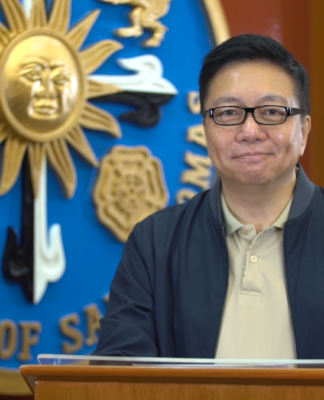TEACHING and nonteaching employees of higher education institutions (HEIs) who will lose their jobs during the K to 12 transition period in 2016 will be compensated through a proposed P29-billion stabilization fund, government officials said.
In a meeting with the House Committee on Higher and Technical Education (CHTE) last June 24, the Commission on Higher Education (CHEd), along with the Department of Education (DepEd), Technical Education and Skills Development Authority (TESDA), and the Department of Labor and Employment (DOLE) said the compensation would be distributed during a two-year period.
Under the proposal, P10 billion will be allotted for the operation of HEIs; P17 billion or P30,000 per month for teachers; and P2 billion or P15,000 per month for support staff.
According to DOLE Undersecretary Rebecca Chato, the stabilization fund seeks to help affected employees during the transition period, apart from the benefits they will receive from their respective HEIs after being dismissed.
“It’s a proposal to help the faculty and the nonteaching personnel transition within a period of two years to another [job],” Chato said in the hearing at the House of Representatives. “The concept of the P30,000 is a compensation on top of what should be given by the school to the displaced faculty or nonteaching personnel.”
She added that the stabilization fund would only be given to displaced employees due to the K to 12 transition and not to those who would be terminated due to other reasons.
The fund will come from DOLE and CHEd. However, CHEd Commissioner Cynthia Rose Bautista explained that the P29-billion budget was not yet final and may change as discussions continue.
In an interview with the Varsitarian, Rep. Antonio Tinio of the Alliance of Concerned Teachers backed the proposed stabilization fund.
“There should be support for faculty and employees in terms of salaries and benefits, respect for tenure, respect for unions, [and] right to self-organization. In the two-year period, they shouldn’t lose their jobs or suffer from salary reduction, and that established unions will not be abolished,” he said.
Meanwhile, Pasig Rep. Roman Romulo, CHTE chairman, called on government agencies to quickly come up with a formal proposal for the stabilization fund.
“They (CHEd, DOLE, DepEd, and TESDA) should take note of all the comments made, because there is still no final draft. They’re still studying all the options possible… there should be a sense of urgency since the implementation of K to 12 is already near,” he said during the meeting.
The Enhanced Basic Education Act of 2013, or the K to 12 program which was signed by President Benigno Aquino III on May 15, 2013, requires two additional years of secondary education starting 2016. High school students will have to enroll in Grade 11 instead of graduating to first year college.
The extended years in high school prompted CHEd to reduce the general education curriculum in college from a maximum of 63 units to 36 units, moving subjects such as Basic Economics, General Psychology, and Filipino to senior high school. As a result, college teachers would be displaced because of reduced teaching loads.
A study conducted by CHEd and DOLE showed that a total of 86,001 teachers were at risk of displacement upon the full implementation of the K to 12 program.
According to Joseph Noel Estrada, legal counsel of the Coordinating Council of Private Educational Associations (COCOPEA), schools have no other option but to retrench some of their faculty because of the expected decrease in the number of enrollees in 2016.
“Even without K to 12, the reasons for displacement are the competency of teachers and probationary status,” he said. “[But] the main reason is enrollment because even if the teachers are good but there are few students, there is nothing that these schools can do.”
A study conducted by COCOPEA showed that HEIs would be at risk of losing at least P150 billion worth of revenue due to the enrollment drop during the full implementation of the K to 12 program.
Not enough
Academic and nonacademic unions are still seeking representation in talks regarding the labor implications of K to 12.
Rene Tadle, internal vice president of the UST Faculty Union, said only college and university administrators were approached in the discussions on the K to 12 implementation.
“We are not against K to 12. Our problem here is the way K to 12 is being implemented. What we are simply asking from this discussion is to not only invite owners of schools, but make sure to invite the faculty unions because that is a different sector. We belong to the same institution but it is possible that we have different interests,” Tadle said during the hearing. Arianne F. Merez














